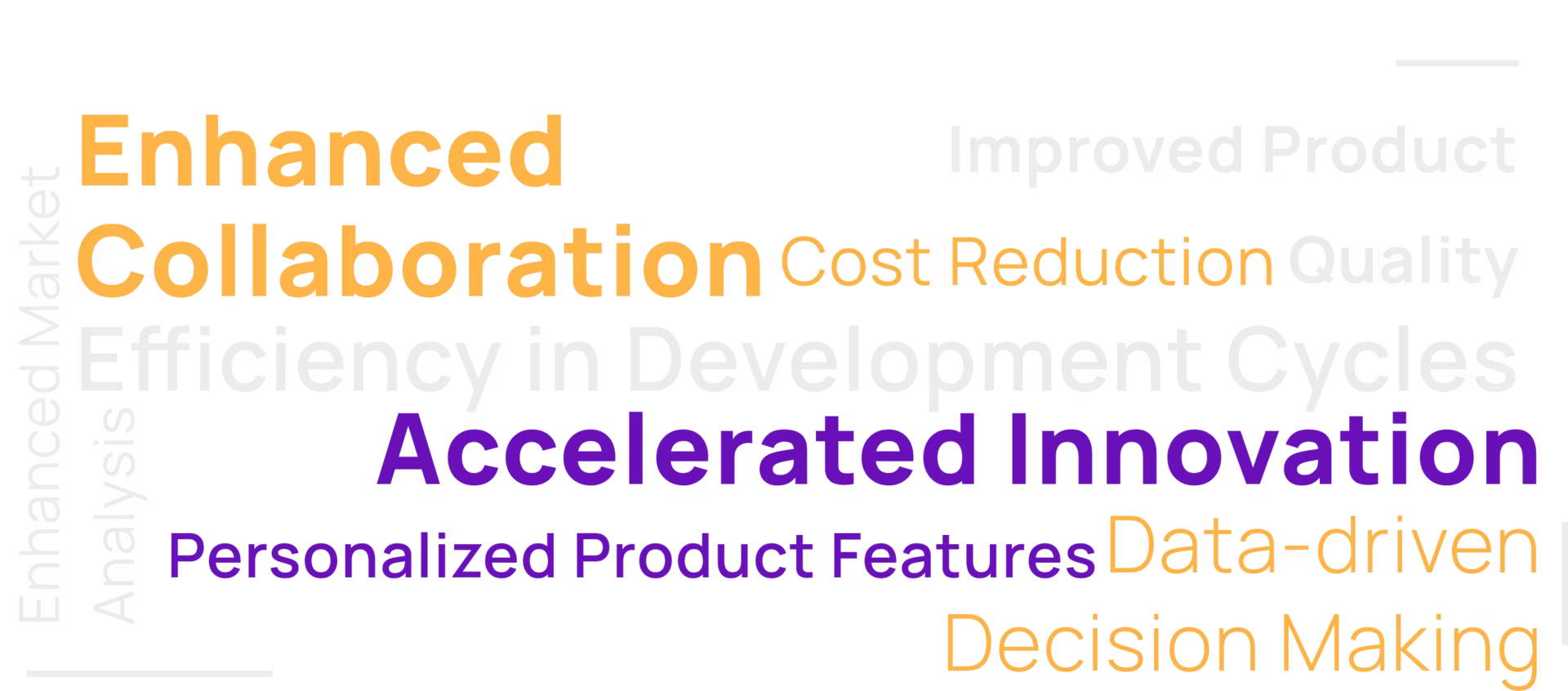Automated topic modeling is a powerful technique in natural language processing (NLP) that enables the identification and extraction of themes or topics from large volumes of unstructured text data. By analyzing the co-occurrence of words and phrases within a dataset, topic modeling algorithms can group related documents and highlight the underlying themes that may not be immediately apparent.
This capability is particularly significant in today’s data-driven world, where organizations are inundated with vast amounts of textual information—from customer feedback and social media posts to academic papers and news articles.
The relevance of automated topic modeling lies in its ability to transform unstructured text into structured insights. Businesses and researchers can leverage these insights to make informed decisions, enhance customer experiences, and drive strategic initiatives.
For instance, a company can analyze customer reviews to identify common pain points or preferences, while a researcher can explore trends in academic literature over time.
Role of AI
Artificial intelligence plays a crucial role in enhancing traditional topic modeling techniques. While earlier methods relied heavily on statistical approaches, AI introduces advanced algorithms that improve the efficiency and scalability of topic modeling processes.
Machine learning and deep learning techniques, such as neural networks and transformers, enable models to better understand context, semantics, and the relationships between words.
For example, traditional algorithms like Latent Dirichlet Allocation (LDA) assume that each document is a mixture of topics, which can lead to oversimplified interpretations. In contrast, AI-driven models can capture more complex patterns and nuances in the data. This allows for a more accurate representation of topics and their interrelations, ultimately leading to richer insights.
Benefits
The adoption of automated topic modeling powered by AI offers several key advantages:
- Speed: Automated topic modeling can process large datasets much faster than manual analysis. This efficiency allows organizations to respond quickly to emerging trends and insights, making it possible to stay ahead in a competitive landscape.
- Accuracy: AI-enhanced models can achieve higher accuracy in topic identification by leveraging sophisticated algorithms that account for linguistic nuances and contextual relationships. This leads to more reliable results, which are critical for data-driven decision-making.
- Uncovering Hidden Themes: One of the most compelling benefits of automated topic modeling is its ability to reveal hidden themes within diverse datasets. By identifying patterns and connections that may not be visible through traditional analysis, organizations can gain deeper insights into customer sentiments, market dynamics, and emerging topics of interest.
- Scalability: As the volume of text data continues to grow, the need for scalable solutions becomes increasingly important. Automated topic modeling can easily adapt to larger datasets without a significant increase in resource requirements, making it a sustainable choice for ongoing analysis.
- Versatility: Automated topic modeling can be applied across various domains, including marketing, healthcare, social media analysis, and academic research. This versatility allows organizations to tailor their analysis to specific needs and objectives, maximizing the value derived from their textual data.
In summary, automated topic modeling is a transformative approach that harnesses the power of AI to analyze large volumes of text data efficiently and effectively. By uncovering hidden themes and providing actionable insights, it empowers organizations to make informed decisions and drive meaningful change in their respective fields.

How Automated Topic Modeling Works
Mechanics of Topic Modeling
Automated topic modeling is grounded in several key principles that help to reveal the latent themes within large collections of text. The fundamental assumption of topic modeling is that documents are composed of a mixture of topics, and each topic is characterized by a distribution of words. This means that, for any given document, certain topics will be more prevalent than others, and the words within those topics will appear with varying frequencies.
The process begins by representing the text data in a structured format, typically as a document-term matrix, where rows represent documents and columns represent words. Each entry in this matrix indicates the frequency of a word in a document. Topic modeling algorithms then analyze this matrix to identify patterns of word co-occurrence, allowing them to infer the underlying topics present across the dataset.The core assumptions of topic modeling include:
- Document-Topic Distribution: Each document is assumed to be generated by a mixture of topics, where each topic contributes a specific proportion to the document.
- Topic-Word Distribution: Each topic is represented as a probability distribution over the words in the corpus, meaning that certain words are more likely to appear in specific topics.
These assumptions enable the algorithms to iteratively refine their understanding of the document-topic and topic-word relationships, ultimately identifying coherent topics that encapsulate the themes present in the text.
Popular Algorithms
Several algorithms are commonly used in automated topic modeling, each with its unique approach and strengths:
Latent Dirichlet Allocation (LDA)
LDA is one of the most widely used topic modeling techniques. It is a generative probabilistic model that assumes documents are mixtures of topics, and each topic is a mixture of words.
LDA operates on the document-term matrix to uncover the latent topics by analyzing word co-occurrence patterns. It uses a Bayesian framework to estimate the distributions of topics and words iteratively, allowing for the discovery of hidden structures in the data.
Non-negative Matrix Factorization (NMF)
NMF is a linear-algebraic approach that decomposes the document-term matrix into two non-negative matrices: one representing topics and the other representing the weights of those topics in each document. This non-negativity constraint enhances interpretability since negative values do not provide meaningful insights.
NMF is particularly effective for shorter documents and can yield clearer topic representations compared to LDA.
Hierarchical Dirichlet Process (HDP)
HDP extends LDA by allowing the number of topics to be inferred from the data rather than predefined. This nonparametric approach is beneficial when the number of topics is unknown and can adaptively grow as more documents are analyzed.
HDP maintains the probabilistic framework of LDA while providing greater flexibility in topic modeling.
BERT and Transformers for Topic Modeling
Recent advancements in natural language processing have introduced transformer-based models like BERT (Bidirectional Encoder Representations from Transformers) for topic modeling. These models leverage contextual embeddings to capture semantic relationships between words, enabling more nuanced topic identification.
By using embeddings, they can better understand the context in which words appear, leading to richer and more accurate topic representations than traditional methods.
AI Enhancements
Artificial intelligence significantly enhances the capabilities of these topic modeling algorithms in several ways:
Improved Natural Language Processing (NLP)
AI-driven models utilize advanced NLP techniques to preprocess text data, including tokenization, stopword removal, and lemmatization. This preprocessing is crucial for ensuring that the algorithms can effectively analyze the text and identify relevant patterns.
Contextual Understanding
AI models, particularly those based on transformers, can capture the context and semantics of words more effectively than traditional algorithms. This contextual understanding allows for the identification of topics that are more coherent and representative of the underlying themes in the text.
Scalability and Efficiency
AI algorithms can handle larger datasets more efficiently, making it feasible to apply topic modeling to vast amounts of unstructured text data. This scalability is essential for organizations looking to derive insights from diverse and extensive text sources.
Enhanced Interpretability
AI techniques can provide better visualization and interpretation of the results, helping users to understand the relationships between topics and documents more clearly. Tools like pyLDAvis, for example, can visualize LDA results, making it easier to explore the topic distributions and their interrelations.
In summary, automated topic modeling combines foundational principles of statistical analysis with advanced AI techniques to uncover hidden themes in text data. By leveraging algorithms like LDA, NMF, and transformer-based models, organizations can gain valuable insights from their textual information, driving informed decision-making and strategic initiatives.

Churning Out Actionable Insights with BioBrain
BioBrain's AI-powered sentiment analysis offers researchers a robust tool for extracting nuanced insights from open-ended text responses. By leveraging advanced natural language processing (NLP) techniques, BioBrain's system can effectively classify sentiments into distinct categories: Positive, Negative, and Neutral.
This capability is particularly valuable in various research contexts, enabling organizations to derive actionable insights that can inform decision-making and strategic initiatives.
Granular Sentiment Analysis
BioBrain’s sentiment analysis can dissect open-ended responses to provide detailed sentiment scores segregated by class. This granularity allows researchers to understand not just the overall sentiment but also the specific emotional tones conveyed in the text. For instance, a customer feedback survey may reveal that while the overall sentiment is positive, certain aspects—such as product quality—may receive negative sentiments. This differentiation enables targeted improvements.
- Identifying Key Themes: The integration of topic modeling with sentiment analysis allows researchers to uncover key themes within the text data. By analyzing the sentiments associated with specific topics, researchers can identify which themes resonate positively or negatively with respondents. For example, in a product review analysis, sentiments related to "customer service" might be predominantly negative, highlighting an area that requires immediate attention.
- Real-Time Insights: BioBrain’s AI tools can process large volumes of text data in real time, enabling researchers to quickly react to emerging trends and sentiments. This capability is crucial in fast-paced environments where timely insights can lead to swift decision-making. For instance, if a sudden spike in negative sentiment is detected regarding a new product launch, companies can promptly investigate and address the underlying issues.
- Enhanced Decision-Making: By providing a clear understanding of customer sentiments and the themes that drive them, BioBrain empowers researchers to make data-driven decisions. This insight can guide product development, marketing strategies, and customer service enhancements. For example, if sentiment analysis reveals that customers appreciate a particular feature of a product, organizations can leverage this information in their marketing campaigns.
- Benchmarking and Performance Tracking: BioBrain’s sentiment analysis can also be used to benchmark performance over time. By continuously analyzing open-ended responses from surveys or feedback forms, organizations can track changes in sentiment and identify the impact of specific initiatives or changes in strategy. This longitudinal analysis helps in assessing the effectiveness of interventions and refining future approaches.
- Cross-Functional Applications: The insights derived from BioBrain’s sentiment analysis are not limited to customer feedback. Researchers can apply these insights across various domains, including employee engagement surveys, market research, and public opinion studies. Understanding the sentiments of employees or stakeholders can inform organizational changes and enhance overall satisfaction.
In summary, BioBrain's AI-powered sentiment analysis equips researchers with the tools to extract actionable insights from open-ended text responses effectively. By classifying sentiments and uncovering key themes, organizations can make informed decisions that enhance products, services, and overall customer experiences. The ability to rapidly analyze and interpret sentiments positions BioBrain as a valuable asset for any research initiative aiming to leverage qualitative data for strategic advantage.











